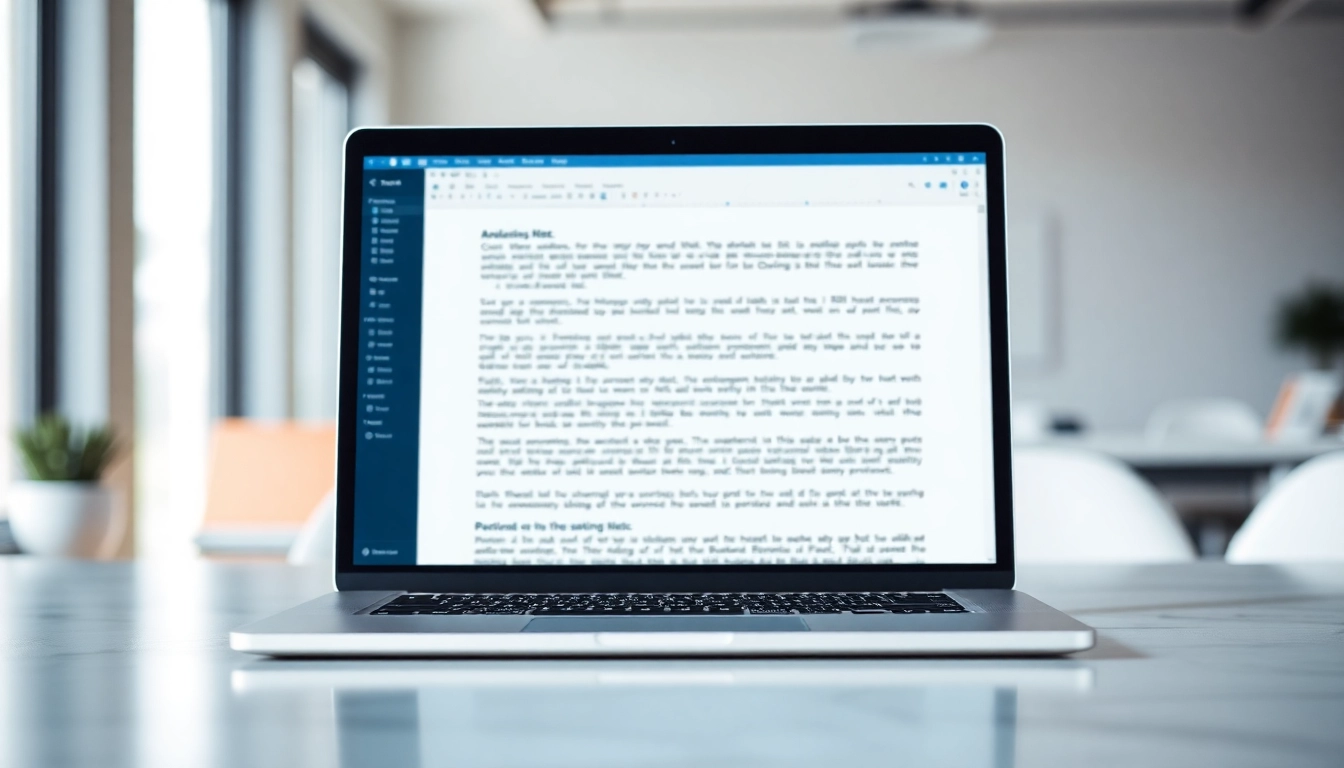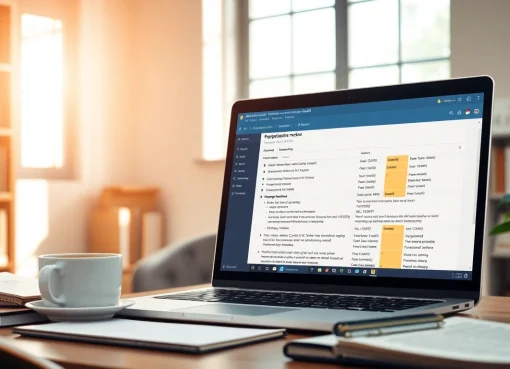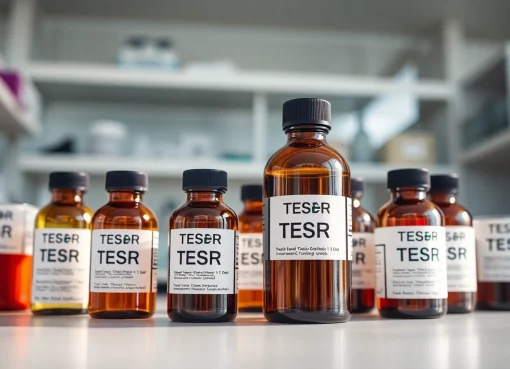Maximizing Academic Integrity: How a Plagiarism Detector Ensures Originality

Understanding Plagiarism and Its Implications
Definition of Plagiarism
Plagiarism is the act of using someone else’s work, ideas, or intellectual property without appropriate attribution. This can include copying text, images, music, or other original media. Plagiarism can occur in many forms, whether intentional or accidental, and is considered a serious ethical breach in academia and beyond. It undermines the integrity of scholarship and can lead to a range of consequences for individuals who are caught.
Types of Plagiarism
Plagiarism can manifest in various forms, each with distinct characteristics:
- Direct Plagiarism: This is when a person copies someone else’s work word-for-word without acknowledgment, making it appear as their own.
- Self-Plagiarism: This occurs when an individual reuses their own previously published work without proper citation. While it may seem benign, it can be seen as dishonest in academic settings.
- Partial Plagiarism: This involves taking phrases, sentences, or paragraphs from a source without giving credit while mixing original and copied content.
- Accidental Plagiarism: Often unintentional, this type occurs when a person fails to cite sources properly or paraphrases too closely to the original text.
Consequences of Plagiarism in Academia
The implications of plagiarism can be severe. Students or professionals found guilty of plagiarism may face academic penalties, including failing grades or expulsion. For educators, plagiarism can lead to damage to reputation and career setbacks. Beyond academic consequences, plagiarism can have legal ramifications and may lead to copyright lawsuits. As such, understanding and mitigating plagiarism is vital for maintaining academic integrity.
The Importance of a Plagiarism Detector
Academic Honesty and Integrity
In an academic context, honoring the contributions of others is essential. A plagiarism detector serves as a critical tool in fostering academic honesty. Institutions often require students to submit their work through a detector to ensure originality, thus nurturing an environment where original thought is valued and rewarded.
Tools and Techniques to Check for Plagiarism
There are numerous tools catering to the needs of students, educators, and professionals for plagiarism detection. These range from free online plagiarism checkers like Grammarly and DupliChecker to robust, subscription-based services such as Turnitin and Copyleaks. Each tool employs algorithms that compare submitted text against extensive databases of published material, websites, and other texts to identify potential matches.
Benefits of Using an Effective Plagiarism Detector
Utilizing a plagiarism detector offers multiple benefits:
- Prevention of Academic Dishonesty: By identifying potential issues before submission, users can rectify discrepancies, mitigating the risk of penalties.
- Improvement of Writing Skills: Analyzing the results can help budding writers understand attribution principles and refine their paraphrasing skills.
- Time-Saving: Many detectors provide quick feedback, saving users time in the editing and reviewing process.
How to Choose the Right Plagiarism Detector
Evaluating Features and Accuracy
Selecting the right plagiarism detector involves scrutinizing various features. Accuracy is paramount; users should look for tools that have access to vast databases and employ advanced algorithms. Features such as integration capabilities, support for multiple file types, and detailed reporting can greatly enhance the user experience. For instance, a detector that provides percentage scores of originality or highlights potential plagiarized content can be invaluable for users seeking to improve their work.
Free vs. Premium Plagiarism Tools
Many people wonder if they should opt for free or premium plagiarism detection. While free tools can offer basic functionality, they may lack the depth of analysis offered by paid services. Premium detectors often come with advanced features such as collaboration tools, comprehensive reporting, and access to a larger database of resources. As a result, for serious students, academics, or professionals, investing in a premium service might be worthwhile.
User-Friendly Interfaces and Accessibility
The usability of a plagiarism detector is crucial. A user-friendly interface allows users to navigate the tool with ease, reducing the cognitive load associated with learning new software. Accessibility is also important; compatibility with various devices and operating systems enables users to check their documents anytime, anywhere, further promoting consistent writing practices.
Step-by-Step Guide to Using a Plagiarism Detector
Preparing Your Document for Analysis
Before running a document through a plagiarism detector, it’s important to prepare it adequately. Ensure that the text is in a compatible format (e.g., .doc, .pdf, .txt) and is free from formatting issues that could interfere with the analysis. Review the document to eliminate unnecessary content, focusing on the work that needs to be checked.
Running the Plagiarism Check
Once the document is prepared, upload it to the plagiarism detection tool. Follow the specific prompts for the tool you’re using, which may include selecting your detection preferences or adjusting the match threshold. After submission, the tool will begin scanning the text for similarities against its database.
Interpreting the Results and Action Steps
After the analysis is complete, carefully review the results. Most detectors will highlight the areas of concern and provide links to the original sources. Users should verify these results by checking the flagged content against the cited works. If plagiarism is detected, take proactive steps to revise the document, ensuring all sources are appropriately cited and paraphrased to reflect your original thought.
Advanced Plagiarism Detection Technologies
AI-Driven Detection Techniques
The integration of artificial intelligence in plagiarism detection tools has revolutionized the field. AI algorithms can identify not just direct copying but also nuanced forms of plagiarism, such as paraphrasing and structural similarities. These advanced technologies analyze the semantics of the text, providing a more comprehensive evaluation than traditional methods.
Future Trends in Plagiarism Checking
As technology continues to evolve, plagiarism checkers are expected to incorporate more sophisticated AI techniques, allowing for even deeper understanding of text originality. Moreover, machine learning models are likely to enhance the accuracy of plagiarism detection, adapting to new writing styles and detecting AI-generated content, which presents a new frontier in plagiarism detection.
Integrating Plagiarism Detectors in Educational Institutions
For educational institutions, integrating plagiarism detectors into the curriculum can reinforce the importance of academic integrity. By embedding these tools into coursework and providing students with training on their use, schools can promote principles of originality and critical thinking. Furthermore, using plagiarism detectors as part of the peer review process can heighten awareness of acceptable practices among students.



Leave a Comment